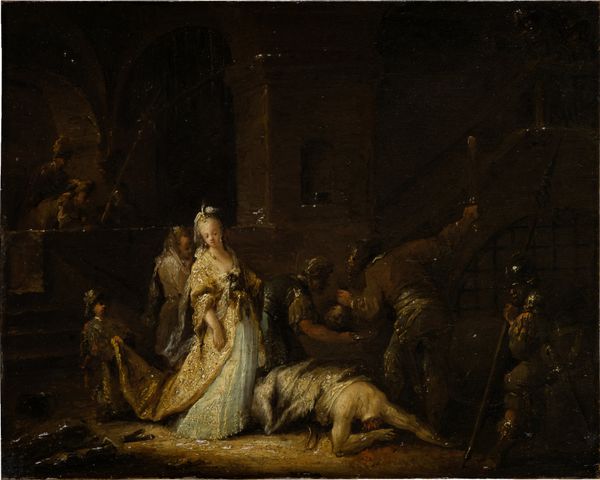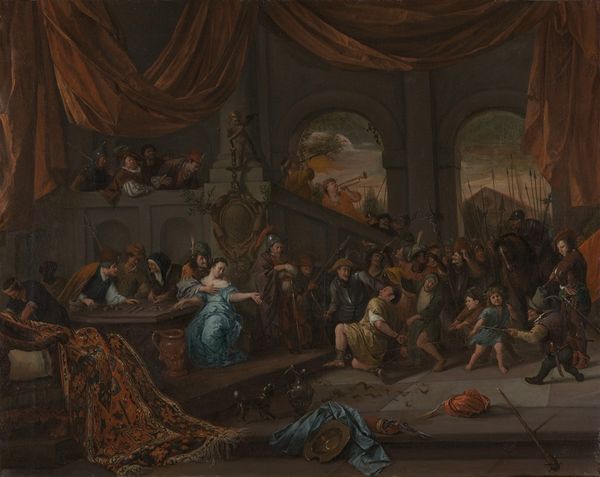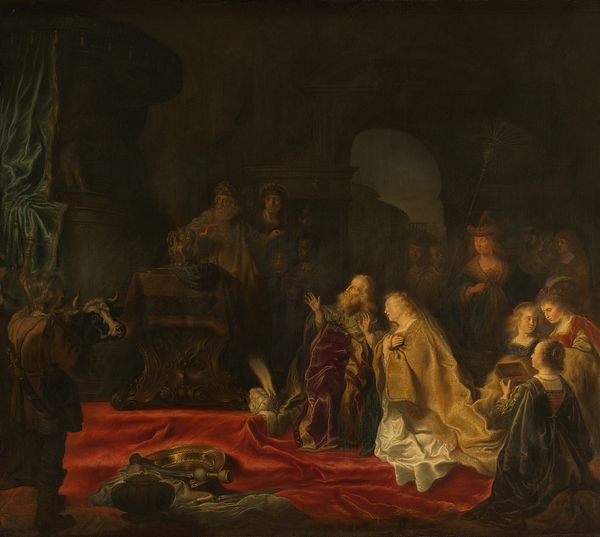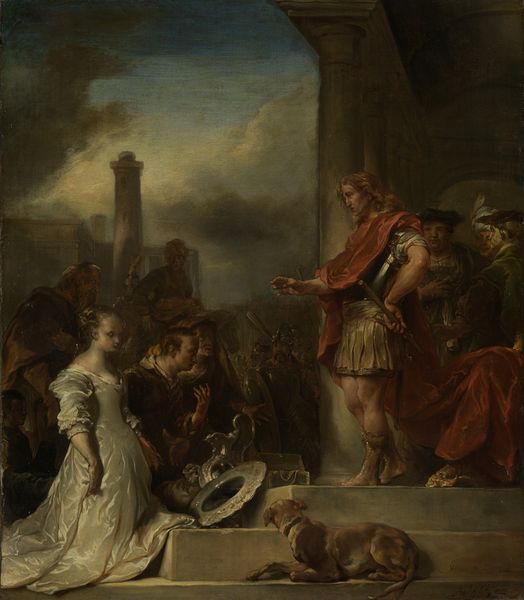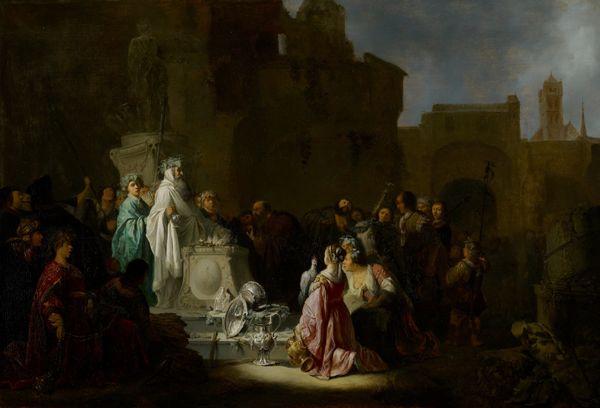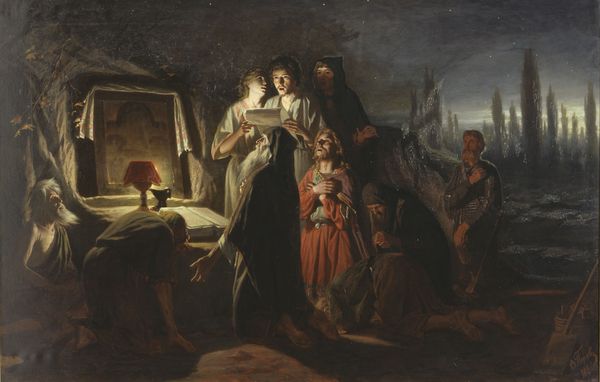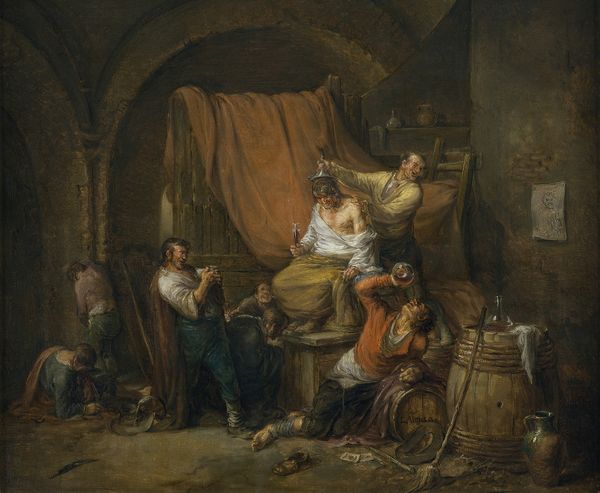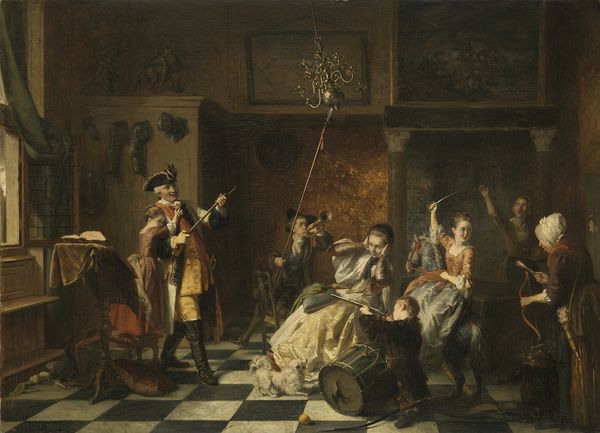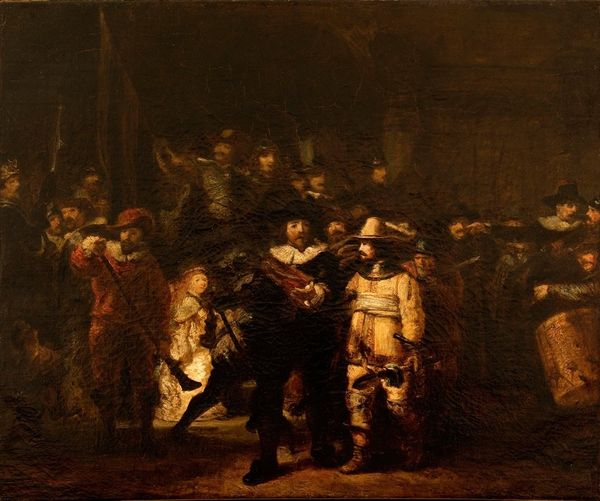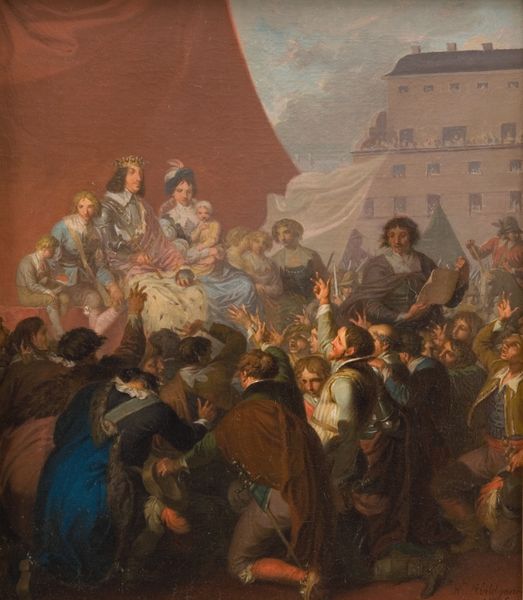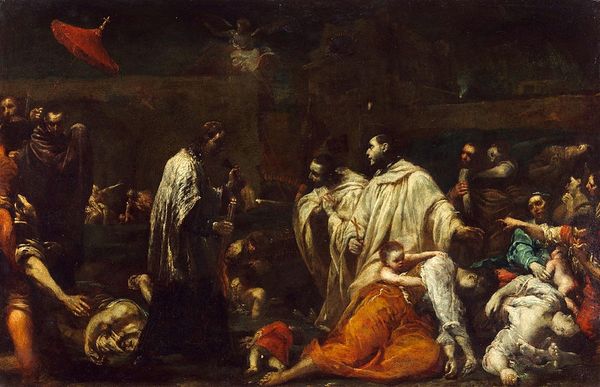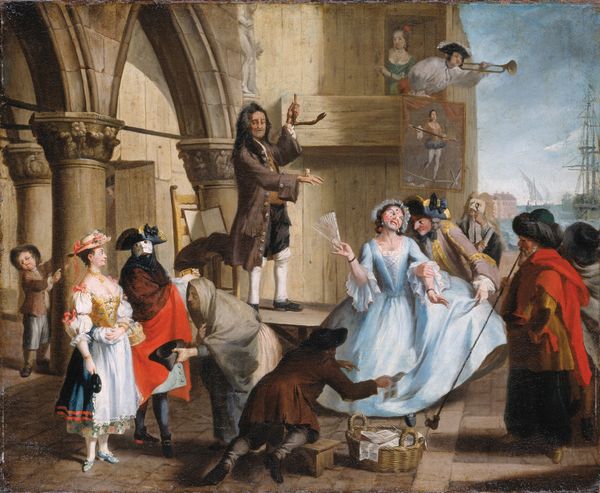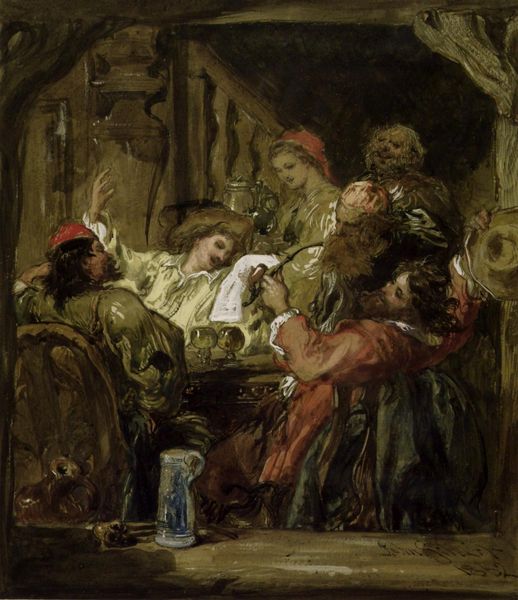
painting, oil-paint, wood
#
narrative-art
#
baroque
#
painting
#
oil-paint
#
landscape
#
figuration
#
wood
#
genre-painting
Dimensions: 48 cm (height) x 60 cm (width) (Netto)
Curator: Before us is Maerten Stoop's "Plundering of a Manor House," an oil on wood panel believed to have been created sometime between 1633 and 1647. It's quite the bustling scene, wouldn't you say? Editor: Bustling is certainly one word for it! My immediate impression is one of chaotic energy, offset by the architectural stillness in the backdrop. The diagonals practically vibrate. Curator: Indeed, the dynamic composition enhances the narrative. Stoop masterfully uses diagonals to guide the eye through the looting scene. But it's the contrast between the rough, active figures and the decay of classical structure that holds my attention. Editor: Right, there’s this tension between raw, societal breakdown depicted with baroque extravagance. Think about who commissioned this! Were they landowners justifying or critiquing these acts? Was this celebratory or cautionary? Curator: The act of commissioning holds real value. I appreciate your interest in its socio-political context, yet I feel inclined to discuss the composition of Baroque and the naturalistic details found on a ruined edifice. Note how Stoop contrasts light and shadow in accordance with classical chiaroscuro, even to enhance depth and draw the eye towards points of dramatic focus. Editor: Speaking of focus, the plundered valuables command our attention; jewelry and fabrics are strewn about while people recoil, their distress evident. The emotions almost overshadow the tangible things that are being taken. How would Stoop depict human frailty? I wonder if we were to learn more about Stoop's patrons whether his aesthetic preferences can be derived from these affiliations. Curator: An interesting thought. As it stands, the artist uses expressive gesture and light—pictorial devices, really—to provoke feeling in the viewer, as if you or I were present during the plunder itself. His masterful arrangement of the figures adds emotional power, certainly—while maintaining aesthetic harmony. Editor: Perhaps the genius here lies in how such an organized, baroque aesthetic renders such profound, social unease. It prompts a reflection of human desires amid ruins. Curator: Quite right. It encourages an acute observation of life through an artistic lens.
Comments
No comments
Be the first to comment and join the conversation on the ultimate creative platform.
